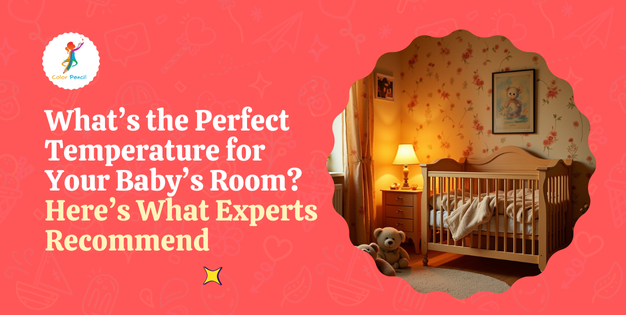
Top 10 Flashcard Combos for Holistic Toddler Learning
Did you know that up to 80% of a toddler’s brain develops in the first five years? As a parent, you’re likely eager to give

As a parent, ensuring your baby sleeps safely and comfortably is always a top priority. But did you know that the perfect temperature for baby plays a crucial role in their sleep quality and overall well-being? A room that’s too hot can increase the risk of overheating, while a chilly space can make it harder for your baby to rest peacefully.
So, what’s the ideal temperature for baby room in winter or summer? Let’s break it down with expert recommendations and practical tips to keep your little one cozy and safe all year round.

Experts recommend keeping the nursery between 68°F and 72°F (20°C to 22°C) for optimal comfort and safety. This range ensures your baby is warm enough without the risk of overheating.
Why does this matter? Babies can’t regulate their body temperature as efficiently as adults, making them more sensitive to fluctuations in room temperature. Keeping the environment stable within this range helps them sleep better and reduces the risk of discomfort.
💡 Tip: Use a room thermometer to monitor temperature levels accurately, especially during seasonal changes.
During colder months, it’s tempting to bundle your baby up or turn up the heat, but overheating can be risky. Instead of cranking the thermostat, consider these alternatives:
💡 How to Check If Your Baby Is Warm Enough? Feel the back of their neck or chest—if it’s warm (not sweaty), they’re just fine!

In hot weather, the same best temp for newborn guidelines apply. To prevent overheating:
💡 Warning Signs of Overheating: Flushed skin, damp hair, rapid breathing, or fussiness can indicate that your baby is too hot.
Maintaining a safe temperature for newborn sleep is about more than just comfort—it can also lower the risk of Sudden Infant Death Syndrome (SIDS). Overheating has been linked to an increased risk of SIDS, which is why keeping your baby’s room in the recommended range is crucial.
Safe Sleep Tips:
💡 Tip: A slightly cooler room with proper layering is safer than an overly warm one.

Dressing your baby appropriately for sleep ensures they stay warm without overheating. Here’s a simple guideline:
Avoid: Hats, thick blankets, or extra bedding, as they increase the risk of overheating.
Once you’ve set the perfect room temperature, the next step is creating a peaceful bedtime routine—and gentle stories can be the perfect bridge between wakefulness and sleep.
🎥 Title: Bedtime Stories for Kids | Calm and Cute Tales for Toddlers | Color Pencil TV
This video blends soft narration with soothing visuals to help your child transition into sleep. It’s ideal for winding down the day and reinforcing a relaxing, consistent bedtime environment.
Let storytime and room comfort work together to support better sleep—for your baby and for you.
💡 Rule of Thumb: Dress your baby in one more layer than you would wear yourself for the same temperature.
Feeling Overwhelmed? Let’s Talk! Join Our Parent Forum and Get Expert Advice & Support!
The best temperature for a baby’s room is 68°F to 72°F (20°C to 22°C). This range keeps them comfortable without the risk of overheating.
Using a digital room thermometer can help track temperature changes throughout the day and night. Some baby monitors also include built-in temperature sensors.
Dress your baby in light, breathable layers. In summer, opt for a onesie, and in winter, use a long-sleeved pajama with a sleep sack. Avoid loose blankets.
Overheating has been linked to an increased risk of SIDS prevention. Signs of overheating include sweating, flushed skin, and restlessness.
Feel the back of their neck—if it’s sweaty, they’re too hot. If their hands and feet feel slightly cool, that’s normal. Focus on their chest temperature instead.
Finding the perfect temperature for baby is a simple but important step in ensuring safe and restful sleep. Whether it’s summer or winter, maintaining a comfortable, well-ventilated room can make all the difference.
Creating a safe and comfortable sleep environment for your baby can help set the stage for peaceful nights, and just like a bedtime story, it can promote calmness and restfulness. Explore a collection of short moral stories to create meaningful bedtime moments.
By following these expert-backed guidelines, you can create the perfect sleep environment that keeps your little one happy, cozy, and most importantly, safe.